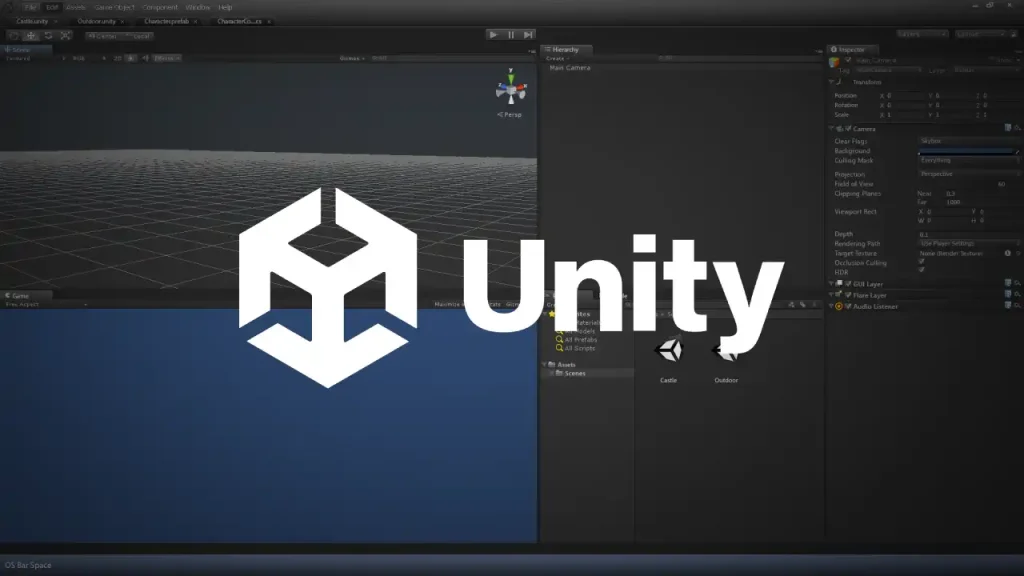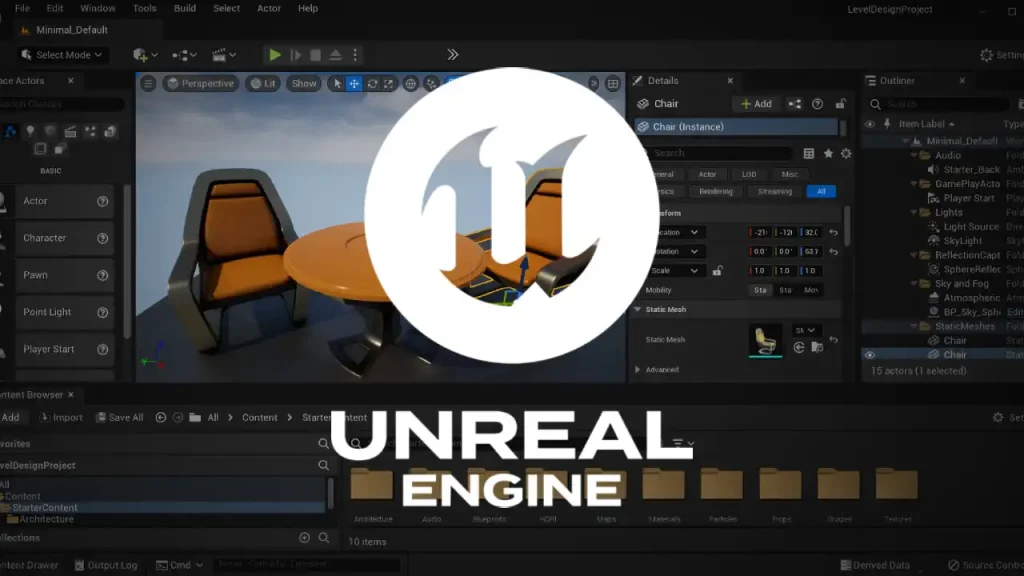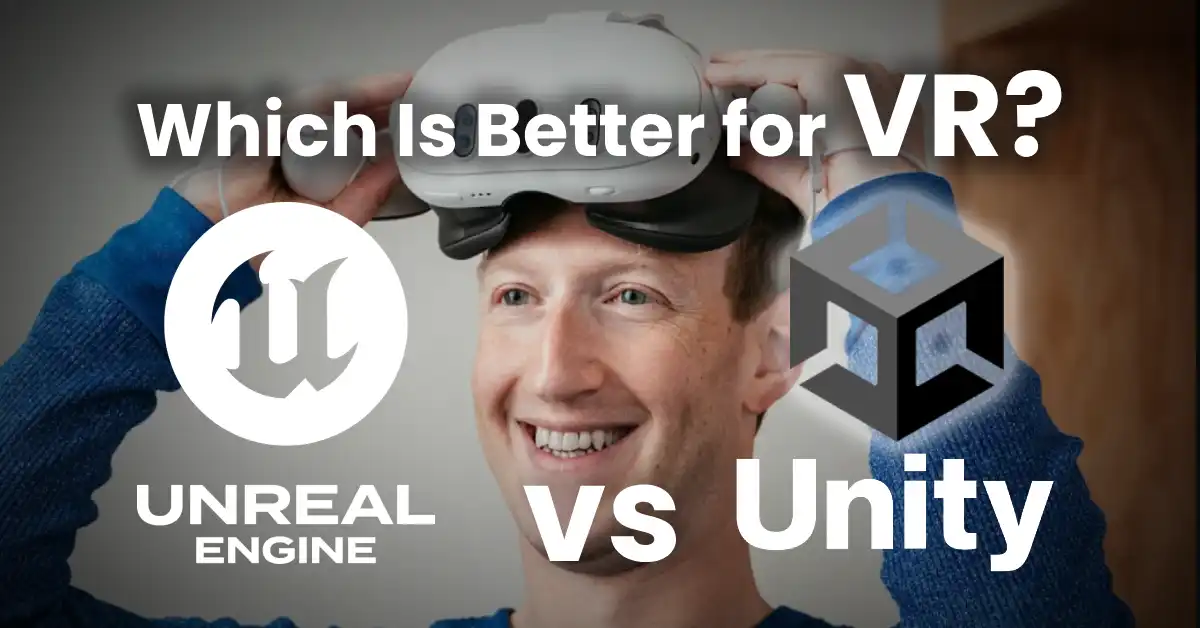Unreal Engine vs Unity For VR: Choosing between Unreal Engine and Unity for virtual reality (VR) development can significantly affect your workflow, team composition, and final product. Both engines are capable and widely used, but they cater to different needs depending on platform, performance requirements, and team skillsets.
Overview of Unity and Unreal for VR
Unity has long been considered the go-to engine for mobile and standalone VR development, particularly for devices like the Meta Quest series. Unreal Engine, by contrast, shines in high-end, PC-tethered experiences with its superior visual fidelity and rendering capabilities.
But as the landscape evolves, the distinctions aren’t so black and white anymore. Developers from both sides have compelling arguments and experiences that illustrate the current strengths and weaknesses of each platform.

Unity for VR: Fast, Accessible, and Developer-Friendly
Unreal Engine vs Unity For VR: Unity is praised for its quick setup and ease of use. Developers often highlight how Unity allows them to get a VR project running with minimal configuration. Its modular architecture and extensive asset store make prototyping faster and more flexible.
One experienced developer noted, “Unity just seems to work out of the box for VR. You’re up and running with a few clicks. Unreal, on the other hand, requires changing 20 different project settings just to get started.”
Another common praise is Unity’s deep integration with Meta’s SDKs. Unity receives updates and new features from Meta significantly faster than Unreal. If you’re targeting Quest devices and want early access to advanced features like room scanning or mixed reality, Unity is generally the better choice.

Unreal for VR: Power, Visuals, and Tooling
Unreal Engine vs Unity For VR: Unreal Engine’s core advantage lies in its visual quality and out-of-the-box capabilities. For teams aiming at photorealism or larger-scale PC VR projects, Unreal provides more robust lighting, LOD handling, and mesh optimization tools.
One developer commented, “We chose Unreal for a room-scale VR experience because the client demanded photorealism. Unreal’s lighting and volumetric capabilities made that possible with less effort than Unity.”
Blueprints, Unreal’s node-based scripting system, is a major attraction for non-coders. Artists and designers often find Unreal more approachable for implementing gameplay mechanics without needing deep programming knowledge.
Performance and Optimization: Unity Leads on Mobile
Mobile VR platforms like the Meta Quest have limited performance overhead, and Unity provides developers more control over rendering pipelines. This makes it easier to squeeze out every bit of performance, which is crucial in standalone VR.
Unity also allows developers to write custom shaders from scratch using HLSL or Shader Graph, making it easier to optimize visuals for limited hardware. Unreal has made strides in this area, but many developers still report difficulty optimizing for Android and standalone VR in Unreal.
One Unity developer stated, “Unreal always felt like a desktop engine first. With Unity, I can get the performance I need without stripping everything down manually.”
Team Composition and Talent Acquisition
From a production perspective, the engine choice can impact hiring. Artists generally prefer Unreal due to its better visual tools and artist-friendly features like Blueprints. A developer who worked on a Sony-funded VR title noted, “Unreal was easier for our artists, which helped us staff the team faster and more effectively.”
On the flip side, Unity is favored by smaller teams or solo developers due to its lower complexity and faster learning curve. This accessibility often makes Unity a better fit for indie projects or quick turnarounds.
Content, Learning Resources, and Community
Unity currently has the edge in community-driven learning resources for VR. There’s a larger pool of tutorials, templates, and forum discussions available for Unity-specific VR development, especially for newer features on Meta’s platform.
That said, Unreal’s documentation and example content have improved significantly, particularly with Unreal Engine 5. Recent updates to mobile forward rendering and expanded support for standalone VR have made Unreal more competitive for Quest development.
What About the Future?
While Unity leads in ease of use and mobile optimization today, Unreal is closing the gap. The release of Unreal Engine 5.5 and beyond includes many upgrades to the mobile and VR rendering pipeline. Epic Games is clearly investing in improving standalone VR support, especially as they aim to expand their store to Android and iOS devices.
That said, as of early 2025, the most stable and performance-friendly setup for Meta Quest development is still Unity. Unreal’s feature parity and stability for standalone VR is improving, but Unity remains the practical choice for mobile-first developers—at least for now.
Final Verdict
For the question Unreal Engine vs Unity For VR there is no one-size-fits-all answer. Your best choice depends on your project’s scope, hardware targets, and the composition of your team. Here’s a quick breakdown:
- Choose Unity if you’re targeting mobile VR (like Meta Quest), want fast iteration, better Meta SDK support, or have a smaller development team.
- Choose Unreal if you’re creating high-end PC VR experiences, prioritizing visuals, or working with a team that includes non-programmers who can take advantage of Blueprints.
Ultimately, Unreal Engine vs Unity For VR, both engines are powerful and capable. It’s less about which engine is “better” and more about which is better suited to your specific goals and constraints.
What engine are you using for your VR project? Let us know in the comments below!
Related Reading
If you’re interested in graphics card performance comparisons and specs, read our in-depth breakdown: RTX 5090 vs 4090 vs 3090 Graphics Card Comparison.


